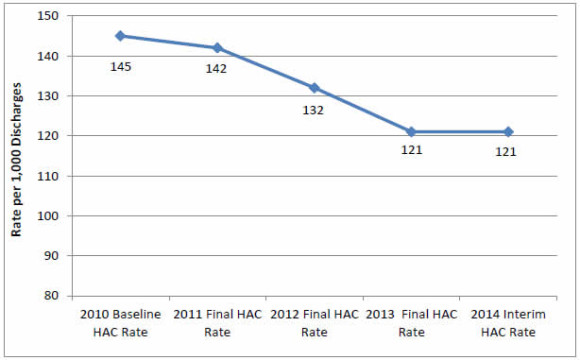Fewer patients are dying from conditions acquired while staying in the nation’s hospitals, according to a new federal report.
Statistics from the Department of Health and Human Services (HHS) show that an estimated 87,000 fewer patients died in hospitals and nearly $20 billion in health care costs were saved as a result of a reduction in hospital-acquired conditions from 2010 to 2014.
Preliminary estimates show that, in total, hospital patients experienced 2.1 million fewer hospital-acquired conditions from 2010 to 2014, a 17 percent decline over that period.
This report aligns with earlier reports in December 2014 that showed 50,000 fewer patients died in hospitals and $12 billion in health care costs was saved between 2010 and 2013.

“Patients in America’s hospitals are safer today as a result of this partnership with hospitals and health care providers,” said HHS Secretary Sylvia M. Burwell. “The Affordable Care Act has given us tools to build a better health care system that protects patients, improves quality, and makes the most of our health care dollars.”
Hospital-acquired conditions include adverse drug events, catheter-associated urinary tract infections, central line associated bloodstream infections, pressure ulcers, and surgical site infections, among others. HHS’ Agency for Healthcare Research and Quality (AHRQ) analyzed the incidence of a number of avoidable hospital-acquired conditions compared to 2010 rates.
Topics USA
Was this article valuable?
Here are more articles you may enjoy.


 Litigation Finance Hits a Wall After Bets on Huge Gains Falter
Litigation Finance Hits a Wall After Bets on Huge Gains Falter  Viewpoint: Agentic AI Is Coming to Insurance Industry – Much Faster Than You Think
Viewpoint: Agentic AI Is Coming to Insurance Industry – Much Faster Than You Think  Lawsuit Over Burger King’s Whopper Ads Set Back by Federal Judge
Lawsuit Over Burger King’s Whopper Ads Set Back by Federal Judge  One of Highest Property Claims Severity Recorded in Q3 on Low Volume, Says Verisk
One of Highest Property Claims Severity Recorded in Q3 on Low Volume, Says Verisk 

